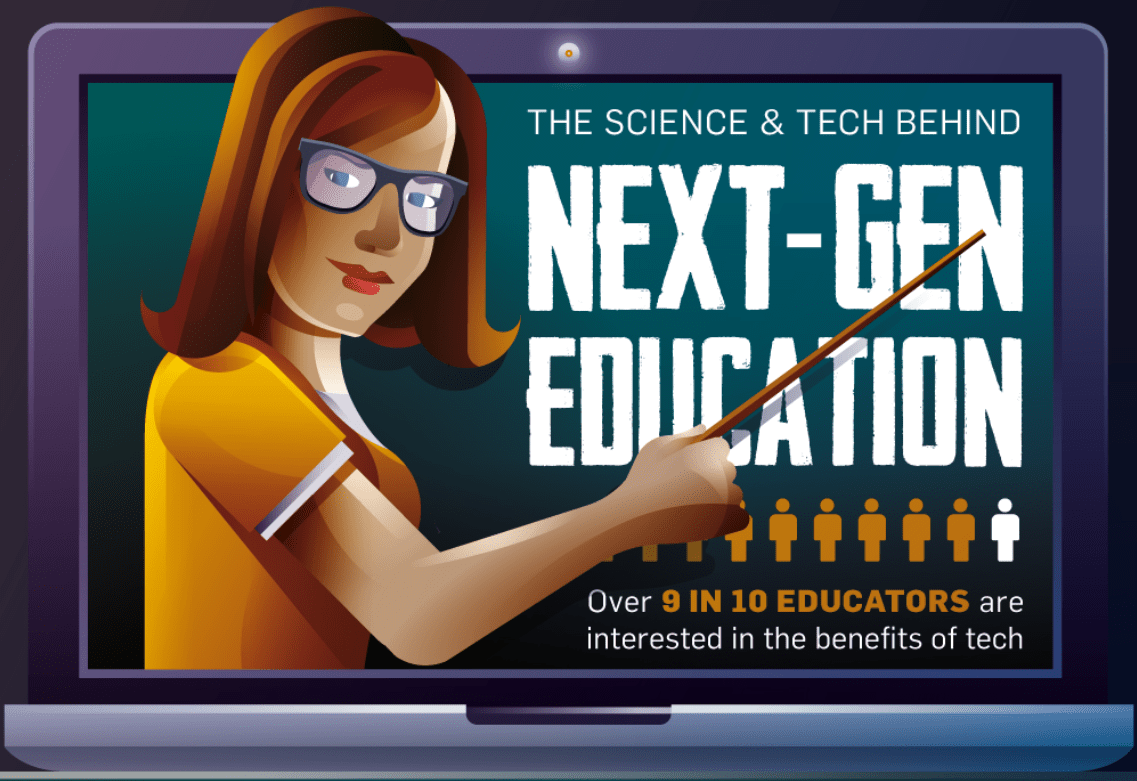With today’s constantly growing tech advances, there are a plethora of amazing applications across many different forums and disciplines. Amid socially connecting people across the globe and lucrative business innovations, it comes as no surprise that there are some new and exciting advances available in the classroom. Educators are looking ahead far into the future to greatly enhance the learning experience of their students.
More than 9 out of 10 educators are interested in, and/or anticipate using technology in their classroom. More specifically, they are using interactive videos, and self-paced curriculum aided by artificial intelligence. Many see these new applications as a way to not only reach more students but as essential to their future success. Increased use of video as a medium is believed by most educational institutions to foster collaboration amongst educators, promote professional development, and most importantly increase student achievement and satisfaction. The most prevalent uses of video focus on enhancing the learning experience for students and freeing more time for teachers to allocate towards other important tasks.
One such enhancement is a new approach to education in the classroom, or more aptly put, outside of the classroom. Flipped instruction is exactly what it sounds like, things traditionally done within and without the classroom are opposite. Historically the teacher reviews homework and then presents new content, which the student then practices at home. In a flipped instruction model, students learn new material before coming into the classroom via video and other technology to teach the teacher, and then in-class time is utilized for the exploration of applications.
This is markedly more student-oriented in comparison to traditional education, which increases student engagement. Another benefit is that students can work more collaboratively, increasing essential soft skills that enable students to effectively interact with the members of their community, future place of employment, and the world at large. One of the potential drawbacks is that in congruence with a collaborative classroom is the potential for a busier and noisier workspace. This makes concentration for some students difficult, let alone acclimating to the entirely foreign learning experience. In addition, flipped instruction must be executed well in order to capitalize on any of the potential benefits. The fact that 18% of school-age children in the U.S. do not have access to the internet at home poses another potential barrier that while glaring, has more remedies than one might think.
Chatbots are an additional advancement in the arsenal of technologically minded educators. Their value as a resource to students and teachers alike has become evident. Chatbots can help with the repeated review, regularly reminding students of previously learned content before they forget using algorithms to predict the point deterioration of short-term memory. They can give students immediate feedback, which helps students greatly improve compared to those who have a delay in feedback. Chatbots can adjust the curriculum to the student’s pace, and even grade papers with a 92% accuracy, removing a huge burden off the educator’s load of work.
There are three notable applications of chatbots that should be brought to your attention. Snatchbot is a chatbot that is free to be embedded into pre-existing platforms such as Blackboard to answer FACs, help with online course navigation, and give immediate answers. The second is the Summit Learning Project, which has developed chatbots that can adapt learning to each student, finding students’ trouble spots and adjusting accordingly, allowing teachers to focus on lesson planning. Finally, Jill Watson is a chatbot built on IBM’s Watson which uses data from the course’s forum to answer students’ technical questions about the learning platform. With the help of these and more tech in the classroom, students and educators have a bright future in an ever-advancing world.
Learn more about reimagining schools with technology here!

This post originally appeared on Kivo Daily











 WebProNews is an iEntry Publication
WebProNews is an iEntry Publication